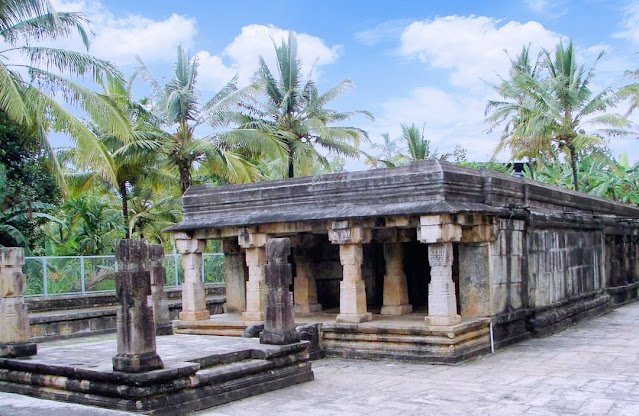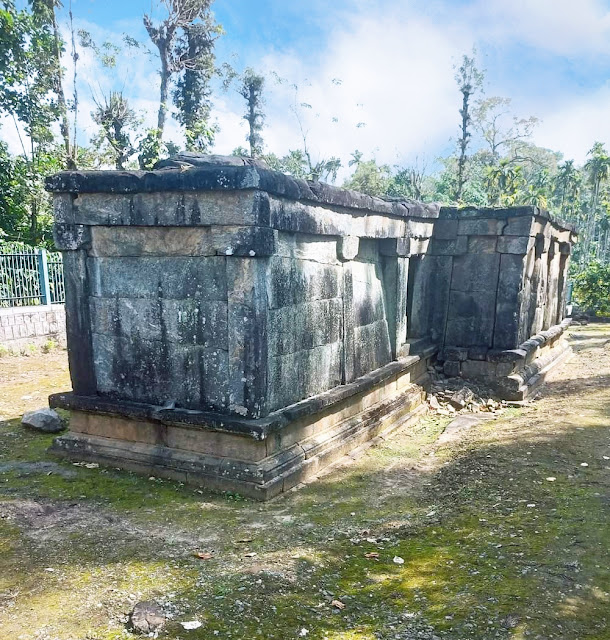Ancient Jain Temple in Wayanad
The ruins of many Jain temples scattered all over Kerala are reminiscent of the ancient time of Kerala. The most important of there is the Bathery Jain temple in wayanad district. Jain temple is one of the main tourist attractions of Wayanad. Kidanganad Basti is one of the oldest Jain temples in Wayanad. It is believed that the temple was built in the 13th century and became a Hindu temple and a major commercial center. Eventually becoming an armory for Tipu sultan. Declared a national monument by the government of India in 1921, the Jain temple is currently under the protection of the central archaeological survey of India. Bathery Jain temple is located at a distance of 24 km from Kalpetta and 41 km from Mananthavady. This Jain temple is built of granite. It is a good example of walled temple. The temples consist of a Sanctum, Sanctorum, Antarala, Closed great Mandapam, Mukhamandapam and Kerala model prayer hall. The shrine is square. The idol is not found. There are idols of Jains in the Sanctum Sanctorum and in the closed great hall. There are seated in a padmasana with a meditation seal within a rectangular frame.
The door panels are decorated with different paintings. At the bottom of the door panels you can see the flower garland. Outside the shrine, there is a pradakshina padam with pillars. Closed great hall has four pillars in two rows. Fade is in front of the great hall,it has 6 pillars in two rows, there is a lot of decoration in this, climb up the stairs to the pillared porch . It glove is adorned with dragon figures. There is a square well in front of the Jain temple. It is said that the tunnel through this well extends to Mysore.
What happened to Jainism in Kerala?
Jainism, which was prevalent in India years ago, has now become obsolete. It was not until the 8th century that Jains became rulers and merchants in Kerala as well. But today there are Jains in only two districts in Kerala, Wayanad and Ernakulam. There were more Jains in Wayanad. Agriculture was the main source of livelihood for the Jains in Wayanad. As incomes declined, many people abandoned farming and moved to other areas. Jain youth from Wayanad started migrating to Bangalore and other parts of Karnataka in search of work. During the famine in the Magadha region in the 3rd century BC, Chandragupta Mauryan, under the leadership of his guru Bhadra Bahu, came to Shravanabela Gola in Karnataka with about 12,000 Jains. These were known as Konkani. Konkanam means the land of those who came from the banks of the Ganges. In the 14th century, Karnataka was known as Konkanam. Jainism was spread by various sages to Kerala, Tamil Nadu and Karnataka. Jain culture soon spread to Wayanad, which was located on the border of Karnataka. Jains still use Kannada as their mother tongue in their homes and rituals. Wayanad is also home to a large number of relics associated with Jain culture. Jain temples and Jains now inhabit Kalpetta, Mananthavady, Varadur, Puthanangadi, Venniyodu, Anchukunnu, Puthiyidam and Palukunnu. Sultan batheri was known as Hannadubeedi in those days. It is said that there were 12 Jain streets in Sultan bathery. But at present there is not even a single Jain family here. The Jain Temple at Bathery is 800 years old. This Jain temple is also known as Kidanganad Basti. The temple is made entirely of stone. The temple is built in the Hoysala Vijayanagara style. The temple is currently under the Archaeological Survey of India.
The temple was also demolished in several periods. The temple came to be known as the Sultan's Battery as it was used to store the weapons of the army during the war of Tipu Sultan in the 18th century. It later became Sultan Bathery. Before that, Sultan Bathery was known as Ganapativattam. It is believed that during the Tipu's War in the 18th century, Jains migrated from Bathery to other places. Every year on the day of Mahavira Jayanti, Jains from Wayanad gather here to perform Abhishek Pooja. The presence of Jains in Wayanad since ancient times is evidenced by the various swastikas and moonstones carved in the stones of the Edakkal Cave. Hoysala script has also been found. The Hoysalas were Jains. For five and a half centuries, areas including Karnataka, Nilgiris and Wayanad were ruled by Jains. Many temples were built in Wayanad during the reign of the Hoysala kings. That is why most of the temples are made of stone. Tipu's War The battle between King Pazhassi and the British weakened Jainism in Wayanad. Even the temples taken over by the Archaeological Department are on the verge of destruction. An example of this is the Jain temple at Panamaram. Palakkad was once a place inhabited by many Jains. Now there are only two families here. The temple of Chandraprabha Tirthankar, the eighth Tirthankar, stands on the Jain hill at Olavakkode. It was renovated six years ago. The pooja and other rituals are performed by Jains from Coimbatore.
Jains are vegetarians because they are based on a non-violent lifestyle. Since he did not eat meat, he used to cultivate and produce food. Jain was also the one who cleared the forest in Wayanad and started farming. Despite its rich heritage and history, Jains' culture and way of life are now facing great challenges. Despite the disappearance of Jainism in many parts of Kerala, Jains remained in Wayanad due to their association with Karnataka. Jainer survived many crises and settled in Wayanad. The survival of the remaining Jains is also in crisis. Abandoned temples in Wayanad are an example of this.
Although Jainism still exists in many states of India, Jainism began to disappear in Kerala from the 10th century onwards. Jain culture was prevalent in Kerala till the 13th century. Later, with the rise of Hinduism, Saiva and Vaishnavism, Jainism began to decline. Historians have also found that Jains were the propagandists of paddy and rice in Kerala during the 8th and 10th centuries. Jains discovered that Kerala was rich in medicinal plants and sought to use Kerala as an important place for Ayurveda.


